Emmi Roth USA Announces Recipe Contest for Postsecondary Students Featuring Emmi Kaltbach Cave-Aged Le-Gruyere Switzerland AOC in Center-of-the-Plate Application
Contest Guidelines:
- Recipes must be submitted in preferred format.
- Entries must include at least one (1) high-resolution, digital photograph of finished dish.
- Contest entrants must be currently enrolled in a postsecondary culinary school/program in the 50 United States. You must include name, email address, telephone number, mailing address, name of culinary school and name of referring culinary instructor with entry.
- Contest entries become property of Emmi Roth USA and may be used in marketing/public-relations activities.
- Entries must be the original work of the entrant, may not have won previous awards, may not have been published previously, and must not infringe third-party intellectual property or other rights.
- April 13, 2012 DEADLINE FOR ALL ENTRIES
- Entries must be emailed to This email address is being protected from spambots. You need JavaScript enabled to view it.. This e-mail address is being protected from spambots. You need JavaScript enabled to view it with Emmi Roth USA in subject line.
- Up to 50 free samples will be provided to the first 50 instructor respondents to contest posting, which started March 1, 2012. Sample will include up to 14 ounces of Emmi Kaltbach Cave-Aged Le Gruyere Switzerland AOC (two random-weight retail cuts, weighing 5 to 7 ounces each). Interested instructors should write to This email address is being protected from spambots. You need JavaScript enabled to view it.. This e-mail address is being protected from spambots. You need JavaScript enabled to view it with name, title, school/institution, shipping address (No P.O. boxes), telephone number and email address. Samples will be shipped via UPS from Monroe, Wis. Please allow approximately two weeks for delivery of samples from response date.
Prizes!
- First- and second-place prices given at $1,000 and $500 respectively.
- Prize winners will also receive an Emmi Roth USA cheese gift basket.
- Referring instructor of the first- and second-place winners shall receive one (1) FREE registration to a 2012 CAFE Conference or Workshop.
- Winning student(s) might be featured in a press release and/or Emmi Roth USA Newsletter.
Eligible recipe entries will be evaluated by a panel of Emmi Roth USA judges on creativity, novelty and/or uniqueness of application and flavor quality in the Center-of-the-Plate application. Winners will be notified on or before May 11, 2012, via telephone and certified mail. For complete info, click here.

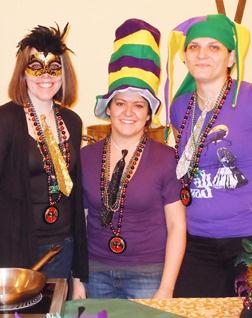 A team of Anne Arundel Community College culinary-arts students swept the competition at the 13th Annual Gumbo Fest in Annapolis. Team Anne Arundel won first place in both categories—the Judge’s Choice and People’s Choice—at the Feb. 26 competition at the Double Tree Hotel in Annapolis. Eleven other teams from area restaurants also competed in this year’s Gumbo Fest.
A team of Anne Arundel Community College culinary-arts students swept the competition at the 13th Annual Gumbo Fest in Annapolis. Team Anne Arundel won first place in both categories—the Judge’s Choice and People’s Choice—at the Feb. 26 competition at the Double Tree Hotel in Annapolis. Eleven other teams from area restaurants also competed in this year’s Gumbo Fest.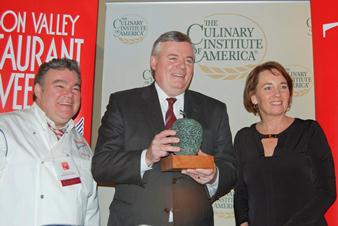 Dr. Tim Ryan, CMC, president of The Culinary Institute of America (CIA), is the recipient of The Valley Table magazine’s first Farm-to-Table Award recognizing leadership in the support of regional agriculture. The award was presented to Ryan at the Hudson Valley Restaurant Week launch event at the college on February 28, 2012.
Dr. Tim Ryan, CMC, president of The Culinary Institute of America (CIA), is the recipient of The Valley Table magazine’s first Farm-to-Table Award recognizing leadership in the support of regional agriculture. The award was presented to Ryan at the Hudson Valley Restaurant Week launch event at the college on February 28, 2012. Do you want to teach your staff or students about a specific area of the professional kitchen? Are you looking for a comprehensive yet concise resource? If so, the American Culinary Federation’s (ACF) latest series, National Apprenticeship Training Program for Cooks, and its accompanying CD-ROM resources, is for you. Compiled and published by American Technical Publishers (ATP), the 10 modules are available for $25 each, with a 25% discount for purchases of five or more. A compiled textbook, containing content from each of the modules, is also available for $80.
Do you want to teach your staff or students about a specific area of the professional kitchen? Are you looking for a comprehensive yet concise resource? If so, the American Culinary Federation’s (ACF) latest series, National Apprenticeship Training Program for Cooks, and its accompanying CD-ROM resources, is for you. Compiled and published by American Technical Publishers (ATP), the 10 modules are available for $25 each, with a 25% discount for purchases of five or more. A compiled textbook, containing content from each of the modules, is also available for $80. The recent Farming for the Future Conference promoted new ideas and learning to the benefit of all.
The recent Farming for the Future Conference promoted new ideas and learning to the benefit of all.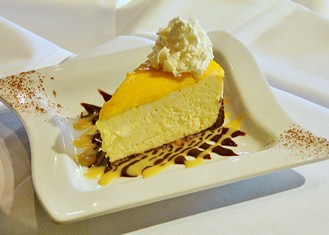
 Current and emerging trends as revealed at the 20th-annual Catersource Conference & Tradeshow in Las Vegas last month.
Current and emerging trends as revealed at the 20th-annual Catersource Conference & Tradeshow in Las Vegas last month.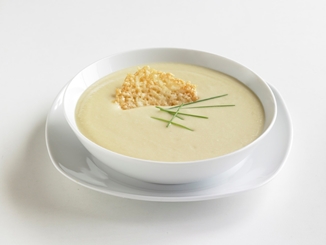 Restaurants show big growth in demand for soup and salad menu items, finds Technomic.
Restaurants show big growth in demand for soup and salad menu items, finds Technomic.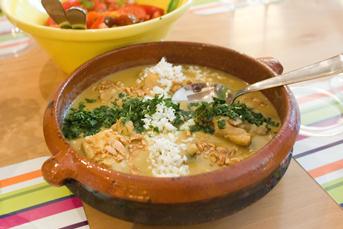 Italian is so mainstream it might as well be considered American cuisine, reports Mintel. Meanwhile, growing interest in genuine ethnic fare aligns with a broader consumer trend, “The Real Thing.”
Italian is so mainstream it might as well be considered American cuisine, reports Mintel. Meanwhile, growing interest in genuine ethnic fare aligns with a broader consumer trend, “The Real Thing.”